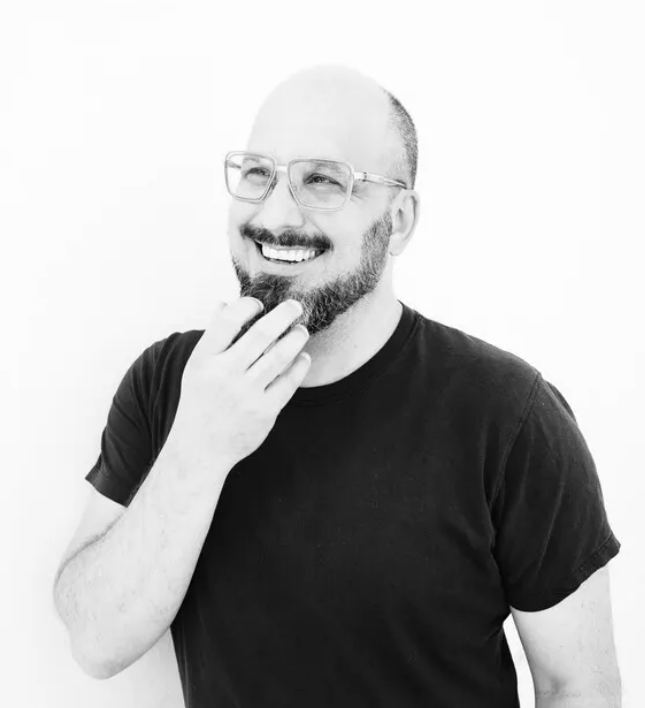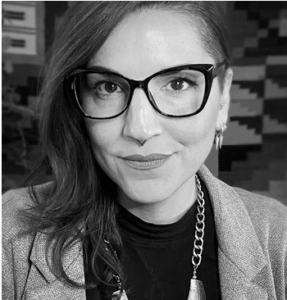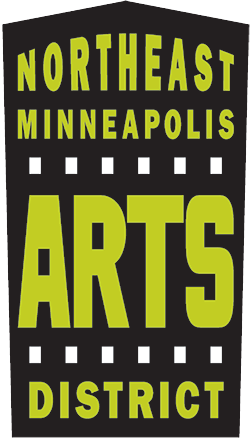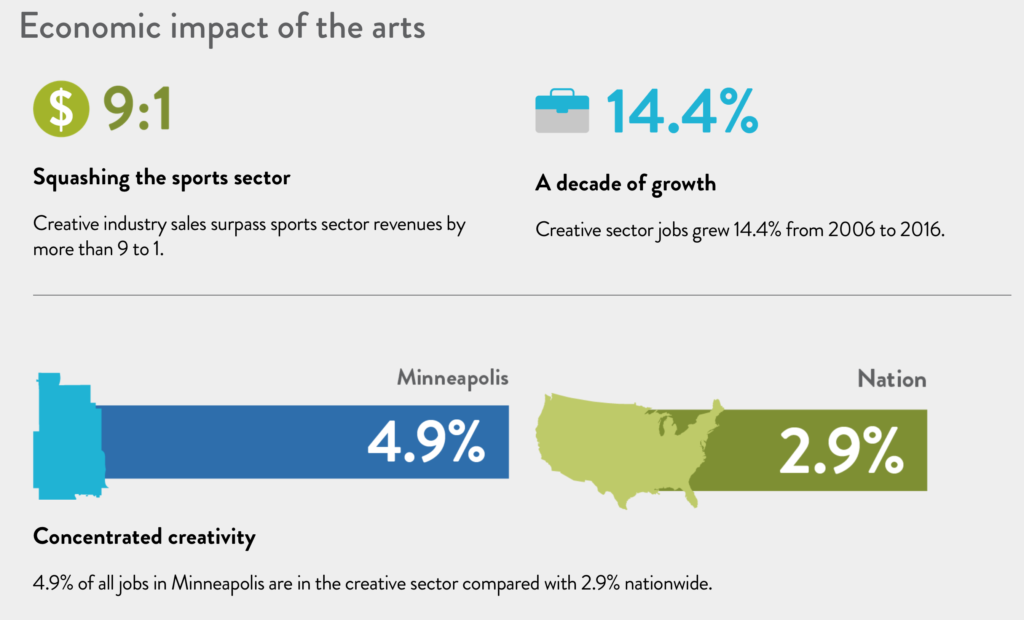Ben Johnson in March, and Addy Gonzalez in November, arrived from Los Angeles in 2023 bringing fresh energy to Minneapolis’ new Department of Arts and Cultural Affairs. Johnson became the first director of the department, which is focused on ensuring the growth and sustainability of arts, cultural expression, and creativity throughout the city. Gonzalez is Executive Manager of Arts.

For a city of its size, Minneapolis is packed with a surprisingly diverse array of art and culture. It grew robust due to distance from the next biggest city, Chicago. Early monied businesspeople supported the arts so they wouldn’t have to travel for theater and galleries.

The city-designated Northeast Minneapolis Arts District has been voted the Best Arts District in the country two years in a row and is in the running again. And yet, one of the top complaints heard from artists is that national, regional, and even local collectors overlook Minneapolis in favor of the major art markets like New York, San Francisco, and Los Angeles. There is a sense among many artists that if one wants to “make it big,” one is going to have to exhibit or perform in the bigger cities.
Johnson and Gonzalez are forming a vision to change that perception.
Originally from Minnesota, Johnson brings a wealth of experience from a career leading in the arts and cultural sectors of Detroit, Beverly Hills, and Los Angeles. “If I’m a young artist here and I choose to leave for LA, what am I thinking I don’t have here that I’m going to get there?” But far from turning Minneapolis into Los Angeles, Johnson wants to “turn it into the kind of city that we want it to be on behalf of the people who live here and on behalf of the state.”
In November of 2023, Addy Gonzalez joined Johnson’s team as Executive Manager of Arts. She had worked for 15 years in the non-profit arts sector of the San Fernando valley to improve accessibility to the arts for both emerging artists and the community.
Gonzalez sees Minneapolis’ smaller scale as an advantage for its arts communities; it’s more concentrated and more accessible. Having watched Minneapolis from afar since the unrest of 2020, Gonzalez said Minneapolis seems to be reaching a tipping point of social and environmental justice, and she believes art can be at the center of that advocacy. “The arts are absolutely necessary to connect to our humanity.” From her perspective, championing the arts is a way to champion the values we want to see embedded in years to come.
A major focus of the department right now is the city’s effort to revitalize downtown Minneapolis. The Vibrant Downtown Storefronts project will be jointly led by Arts & Cultural Affairs and CPED, with $250,000 in the 2024 budget for Arts & Cultural Affairs. The remaining public-facing funds in the 2024 budget will invest $570,000 ongoing and $120,000 one-time in the city’s cultural districts.
In Johnson’s view, the downtown void predates the pandemic corporate exodus. “We’ve torn down half of downtown and built mega sports complexes.” There are even developers exploring an area adjacent area next to the Farmers Market to benefit sports teams.
The worst of this, Johnson said, is that the Vikings Stadium, the Twins Stadium, and Target Center—our city’s public assets—have been built on the backs of live music and performing arts. “There is an entertainment tax on live music in downtown, and that money goes to pay the Vikings.” The entertainment tax means that venues like First Avenue prefer to bring in bigger-paying artists who don’t necessarily live here and, Johnson pointed out, the money doesn’t land in Minnesota either: it goes to ticket sales companies and sports team owners. “That’s what funding inequity looks like,” said Johnson.
Underpinning the host of creative ideas Johnson and Gonzalez and their department have for the arts and culture of Minneapolis is a more foundational ambition: to build the structural support the creative sector needs to thrive. Both Johnson and Gonzalez stressed the essential and very overlooked role that policy and funding play in a sustainable arts economy.
Unlike for other business sectors, Minneapolis does not have a strong city grants program for the arts. With the creation of the Department of Arts and Cultural Affairs, arts spending has risen, but still amounts to less than 0.1% of the city’s 2024 budget.
Historically, much of the funding for the arts has come from corporate philanthropy and foundations, those early tycoons who brought arts here, and their successors. The problem, Johnson noted, is now these funds can disappear without warning and they aren’t regenerative.” These dollars “should be the icing on the cake, not the cake,” said Johnson.
A byproduct of this funding structure is that it forces artists and organizations to compete. Johnson and Gonzalez are motivated to see the city create a robust grants program, where any creative who needs funding has a good chance of getting it. Johnson and Gonzalez also mentioned policy changes artists and arts organizations could advocate for, such as rent subsidies or protections to stabilize artist access to studio space.
But to do that, they said, the arts organizations of Minneapolis need to start working together politically.
Johnson cited the Minneapolis biking community as an example of how to get city leaders to pay attention to a cause. “The bike alliance is organized; they know when and where to show up.” Their collective efforts have helped to turn Minneapolis into one of the most bikeable cities in the U.S.
Northeast Minneapolis Arts District has worked consistently to develop relationships with the city. Paul Ostrow, former City Council Member, was instrumental to the city’s creation of the Arts District in 2003 and now sits on the district’s board. Arts District board members relate to current Council President Elliott Payne and have had a strong relationship with First Ward Council Member Kevin Reich before him. Current Council Member Michael Rainville was an Arts District board member before running for office.
Johnson’s energy seems to be more oriented toward uniting the dispersed arts communities around a shared agenda of more stable funding for artists throughout the city. In his view, it’s time for a citywide arts alliance, and hopes that Northeast will help that happen.
By Katherine Boyce

